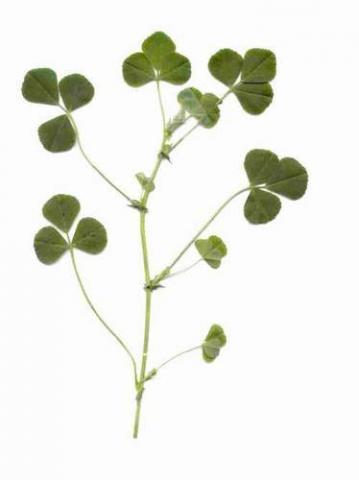Medicago truncatula

| Common Name | Medicago
|
|---|---|
| Genus | Medicago
|
| Species | truncatula
|
| Ploidy | Diploid
|
| Chromosome Number | 2n = 8
|
| Taxonomy | cellular organisms; Eukaryota; Viridiplantae; Streptophyta; Streptophytina; Embryophyta; Tracheophyta; Euphyllophyta; Spermatophyta; Magnoliophyta; Mesangiospermae; eudicotyledons; Gunneridae; Pentapetalae; rosids; fabids; Fabales; Fabaceae; Papilionoideae; Trifolieae; Medicago
|
Medicago truncatula (Barrel Medic or Barrel Medick or Barrel Clover) is a small annual legume native to the Mediterranean region that is used in genomic research. It is a low-growing, clover-like plant 10–60 cm tall with trifoliate leaves. Each leaflet is rounded, 1–2 cm long, often with a dark spot in the center. The flowers are yellow, produced singly or in a small inflorescence of 2-5 together; the fruit is a small spiny pod.
This species has been chosen as a model organism for legume biology because it has a small diploid genome, is self-fertile, has a rapid generation time and prolific seed production, and is amenable to genetic transformation.
It forms symbioses with nitrogen-fixing rhizobia (Sinorhizobium meliloti and Sinorhizobium medicae) and arbuscular mycorrhizal fungi. The model plant Arabidopsis thaliana does not form either symbiosis, making M. truncatula an important tool for studying these processes.
